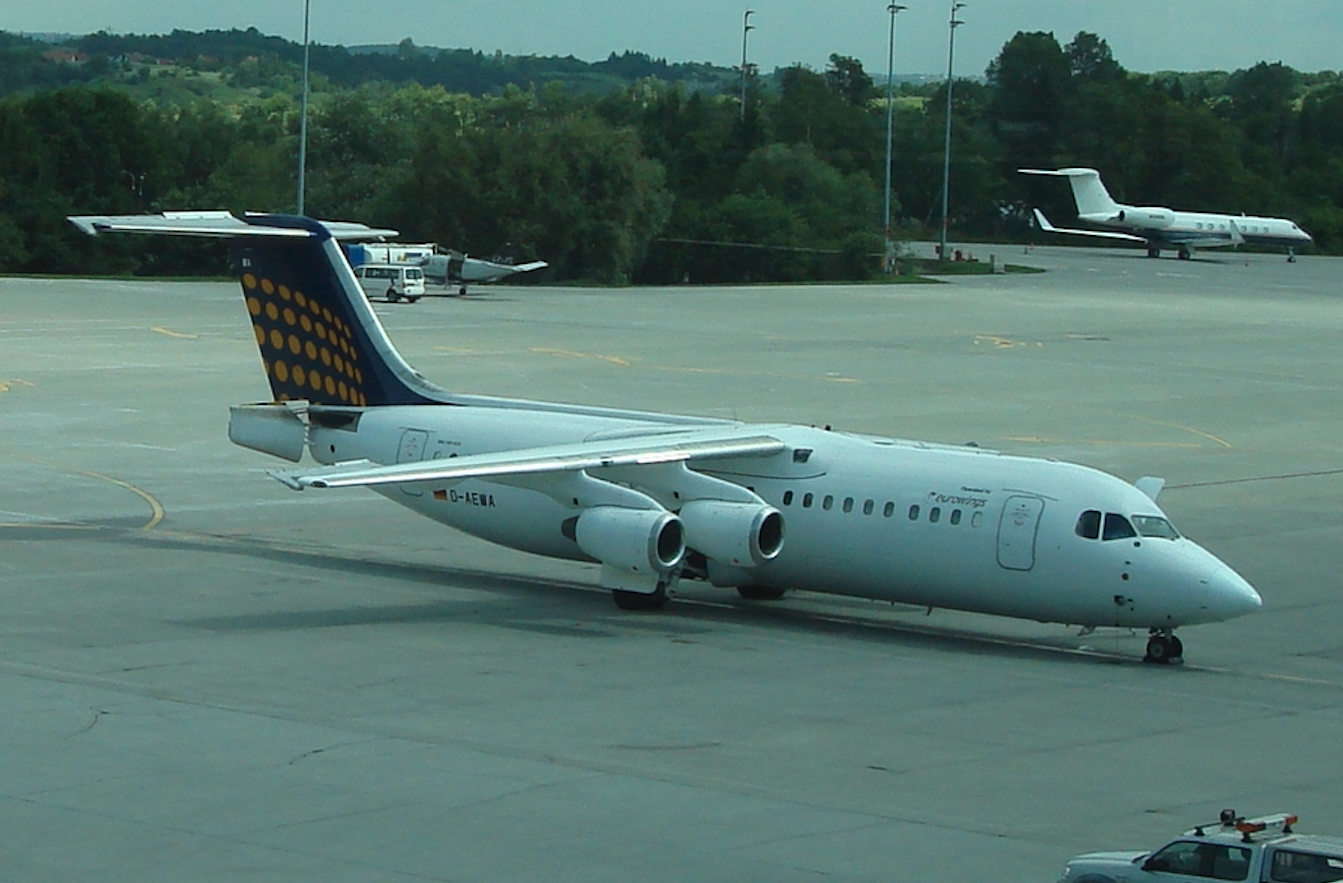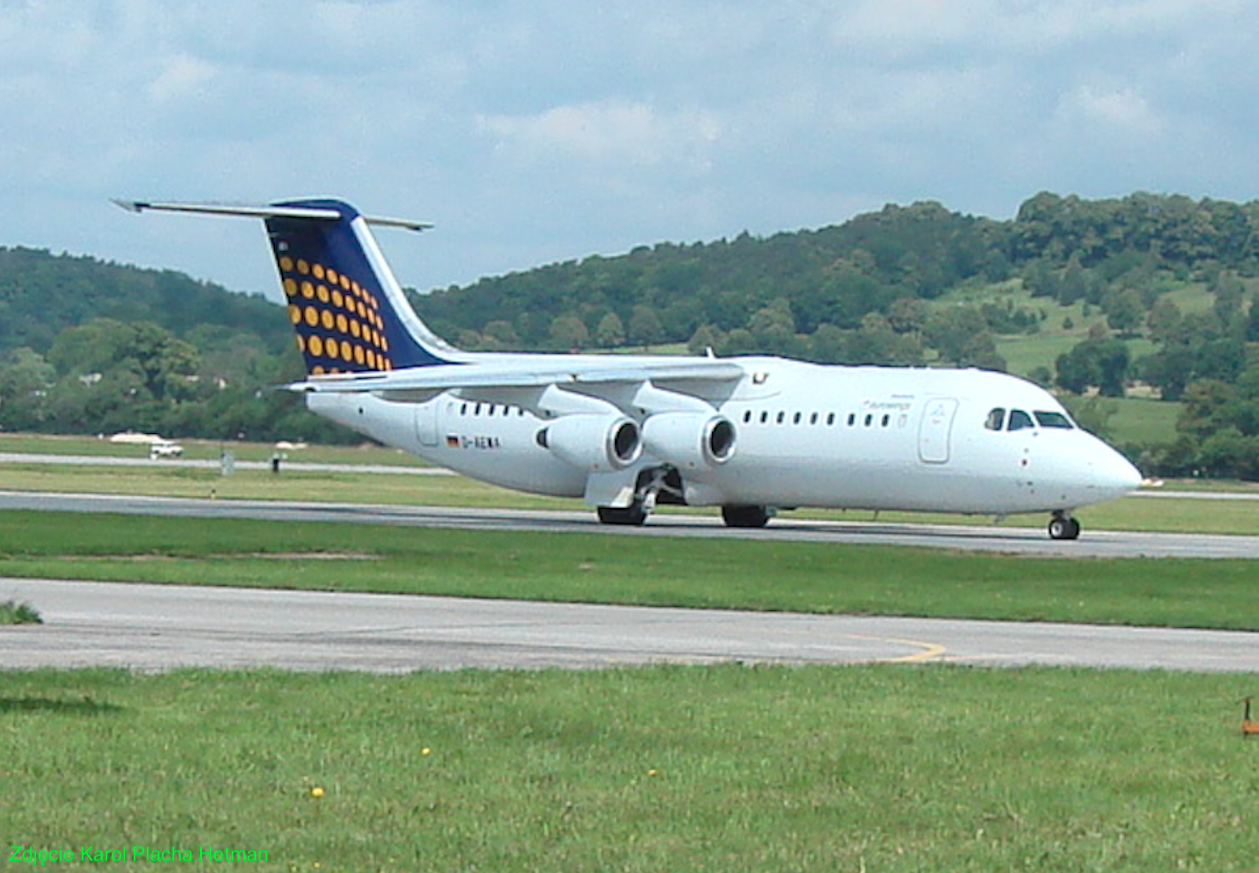Kraków 2023-12-14
British Aerospace BAe-146.
The British Aerospace BAe-146 is a medium-sized transport and maritime aircraft that is powered by four turbojet aircraft engines. The plane is described as short-haul and regional. The previous aircraft was known as the British Aerospace 146, or BAe-146 for short. British Aerospace later became part of the BAE Systems group. Rights to series production of this model by AVRO International. This company produced an improved version that received the Avro RJ. Production of the Avro RJ version began in 1992. Later in 1997, an improved version with installed engines was developed, the Avro RJX.
The program to develop a new launch was launched in August 1973. The goal was to build a connection for the transport of 70. Aircraft designation Hawker Siddeley HS-146. The structure was made with a hatch between turboprop-powered aircraft such as the Hawker Siddeley HS-748 or Fokker F-27 Friendship, turbojet aircraft platforms connected to the BAC One-Eleven and the Boeing B-737. Therefore, the structure was among the delivery children. The program was supported by the British government, which covered 50% of the program costs and in return received a share of the financial distribution.
In 1974, all work on the project was identified as a result of the worldwide economic downturn that occurred as a result of the 1973 oil action. Nevertheless, work continued and in 1978, British Aerospace, the corporate successor to Hawker Siddeley, set out a program. British Aerospace advertised the ten aircraft as quiet turbofan aircraft, with fuel efficiency that actually produced the previous generation of turboprop-powered feeder aircraft. First order for the BAe-146 placed by Líneas Aéreas Privadas Argentinas in June 1981.
The British Aerospace BAe-146 prototype first flew on September 3, 1981. Serial production lasted from 1983 to 2001. The plane was purchased by regional carriers. The BAe-146 was produced in the -100, -200 and -300 models. Equivalent versions of AVEO RJ are designated RJ-70, RJ-85 and RJ-100. Typical transport versions were also produced. The plane is adapted to operate from temporarily prepared landing areas, with grass and gravel surfaces.
In 1981, the construction of an assembly line was started at the British Aerospace factory in Hatfield. Three prototypes were built. At that time, the price of one aircraft was £11 million and the cost of the program was £350 million. For the program to be profitable, 250 units had to be built. The certificate was granted on February 8, 1983. The Avro-RJ family of aircraft was assembled at Avro International (BAE Systems’ Regional Aircraft Center) at Woodford Airport in Greater Manchester, England. Production of the Avro RJ ended with delivery of the last four aircraft in late 2003; A total of 173 Avro RJs were delivered between 1993 and 2003.
BAe-146 design.
The BAe-146 aircraft is a high-wing aircraft with a T-shaped tail. The four engines are located in individual nacelles under the wings. The plane is very quiet and is therefore sold under the name Whisperjet. Thanks to its short take-off and landing, the aircraft is suitable for operating from small airports located close to the centers of large cities; for example London City Airport.
The engines were not equipped with thrust reversers. Instead, the BAe-146 aircraft is equipped with a large two-plate airbrake below the tail rudder, at the rear of the fuselage, which has the advantage of being usable during flight and allowing for a steep landing approach if necessary. In addition, the plane has full-width wing spoilers that deploy immediately after landing.
Silniki BAe-146.
From the very beginning, it was planned to use four turbofan engines for propulsion. Avco Lycoming ALF 502H engines, with 6,500 pounds of thrust, were preferred. There were several reasons why a four-engine arrangement was preferred. The reasons were as follows; Operating aircraft at difficult airports with short runways. Operation from mountain airfields, in thin air. Operation in hot climates. The ALF 502 engine is derived from the Lycoming T55 turboshaft powerplant that powers the Chinook heavy transport helicopter.
During production, the aircraft was modernized. Changes included replacing the original Lycoming ALF 502 turbofan engines with higher-thrust LF 507 turbofan engines, which were placed in redesigned nacelles. BAe 146: Lycoming ALF 502R-5, Avro RJ: Honeywell LF 507-1F. Thrust 6,990 lbf (31.1 kN).
T-T BAe-146-200 data:
2-person crew. Number of passengers 85-100. Length 28.55 m (93.7 ft). Height 8.61 m (28.20 ft). Takeoff weight 42,184 kg (93,000 lb). Speed Mach 0.739 (426 kn; 789 km/h) Max, Mach 0.7 (404 kn; 747 km/h) cruising. Range 100 pax: 3,650 km (1,970 nmi).
Written by Karol Placha Hetman



